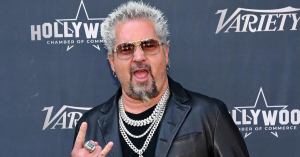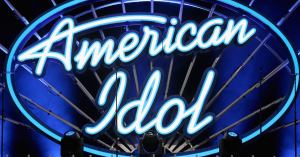Astronauts Doug Hurley and Bob Behnken returned to Earth on Sunday afternoon, following a two-month mission at the International Space Station. The two astronauts landed in the Gulf of Mexico, just off the coast of Pensacola, Florida. Footage of their homecoming made waves on social media.
Behnken and Hurley landed amid the complications of Tropical Storm Isaias on Saturday, thankfully without a hitch. The event was broadcast on most major news networks, and livestreamed on the official NASA and SpaceX video platforms, including YouTube and Periscope. Both Discovery and the Science Channel also dedicated three hours of airtime to the return.
Videos by PopCulture.com
“Welcome back to planet Earth.”
NASA-SpaceX astronauts Doug Hurley and Bob Behnken splashdown in the Gulf of Mexico after months aboard the International Space Station, marking the first splashdown of an American crew spacecraft in 45 years. https://t.co/5iQu1VVDaO pic.twitter.com/F9yEvX1aoK
— ABC News (@ABC) August 2, 2020
The Dragon Endeavor splashed into the water right on schedule at 2:48 p.m. ET. At 3:17 p.m. ET, it was lifted out of the water, and the astronauts were able to return to solid ground. NAA administrator Jim Bridenstine tweeted that conditions were “great” for their parachute descent, despite the stormy conditions this weekend.
The landing included some incredibly precise calculations to ensure that Behnken and Hurley landed where they intended to when they intended to. Their spacecraft left the International Space Station on Saturday night at 7:35 p.m. ET, with just 48 hours’ worth of oxygen for the two of them. The Dragon Endeavor then began its “deorbit burn” at 1:56 p.m. ET on Saturday — a process that took it through the dangerous parts of Earth’s atmosphere. This was completed at 2:13 p.m. ET.
The astronauts were greeted by a staff of several dozen crew members on a recovery boat, including flight surgeons. Behnken said that he was most excited to see his 6-year-old son again, adding: “he’s changed a lot in the couple of months that we’ve been up here.”
The mission was historic as it was the first time a private company sent American astronauts into space. NASA retired its space shuttle program in 2011, choosing to rent seats on other countries’ spacecraft in the meantime for manned missions to the International Space Station. NASA then offered contracts to private aerospace companies to build the next American spacecraft, hoping that the competition in the private sector would drive innovation.
SpaceX was the first company to the punch with the Crew Dragon Endeavor, which can now be reused for multiple missions. The craft is expected to save NASA millions of dollars and may signify the beginning of privatized space travel.









